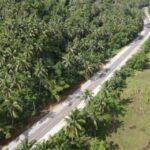MANILA – The President has a deep understanding of the pressing challenges facing the education sector, the Education Secretary emphasized.
This follows the President’s statement that education remains the administration’s “top priority,” as he honored teachers, calling them the “heart of the education system” during his recent State of the Nation Address (SONA).
“The President’s detailed discussion on education in his SONA reflects his profound grasp of the issues,” the Education Secretary said during a forum.
“It’s not superficial—it’s a genuine, deep understanding driven by the need to provide solutions for our youth.”
Key actions to be addressed in the coming years include resolving day-to-day challenges in education, such as teacher workload, learning loss, classroom shortages, and tackling fraudulent activities like “ghost students” in the senior high school voucher program.
Teachers’ Welfare
The Education Secretary expressed optimism that public school teachers will be able to focus more on delivering quality education as their workload eases.
“By the end of next year, all 40,000-plus public schools will have administrative officers,” he said.
This change will reduce non-teaching tasks for teachers, such as student height and weight assessments and basic laptop repairs.
Nearly 100 administrative tasks have already been removed from teachers’ responsibilities, and their workload has been reduced by 57 percent.
Additionally, the non-taxable teaching supplies allowance for public school teachers has doubled, providing extra support for classroom needs.
Private school teachers may also see increased subsidies, pending budget approval.
Students’ Learning
To address learning loss, the Department of Education is implementing alternative delivery methods to adapt to climate change impacts.
Efforts are also underway to strengthen foundational learning by expanding early childcare and daycare centers, particularly in underserved areas.
“The President wants us to focus on foundational learning, as poor early learning outcomes later affect employability,” the Education Secretary noted.
Construction of 328 new child development centers in the poorest municipalities is in progress.
Additionally, around 900 schools are piloting a revised senior high school curriculum to better align graduates’ skills with job market demands.
Ongoing Investigations
The Education Secretary assured that investigations into anomalies, such as fraudulent activities in the voucher program, are ongoing.
The recoverable amount linked to “ghost students” has risen significantly, and legal actions have been taken to reclaim funds and hold perpetrators accountable.
Meanwhile, newly procured laptops have been distributed to public schools, with millions of devices delivered to support teachers and learners.
Santiago Elementary School
Santiago Elementary School is a public elementary school located in Orange, California, established in 1967. It is part of the Orange Unified School District and serves students from kindergarten through sixth grade, known for its commitment to academic excellence and community involvement. The school was named after the Santiago Canyon, reflecting the region’s local history and natural landscape.
Barangay Santiago
Barangay Santiago is a local community in the Philippines, often found in various municipalities or cities across the country. Its history typically reflects Spanish colonial influence, as many barangays were named after Catholic saints—Santiago (St. James) being one of them. Today, it serves as a residential and administrative unit, contributing to local governance and cultural traditions.
General Trias
General Trias, a city in Cavite, Philippines, was originally named *San Francisco de Malabon* before being renamed in 1920 in honor of General Mariano Trias, a revolutionary leader during the Philippine Revolution against Spanish rule. Known for its historical significance, it was a key site during the struggle for independence and is home to landmarks like the *Tejeros Convention* site, where the first Philippine revolutionary government was established in 1897. Today, it blends rich history with rapid urbanization as part of Greater Manila.
Cavite
Cavite is a historic province in the Philippines, located southwest of Manila, known for its significant role in the country’s struggle for independence from Spanish colonial rule. It was the site of the 1872 Cavite Mutiny, a key event that inspired nationalist movements, and later hosted the proclamation of Philippine independence in 1898 at General Emilio Aguinaldo’s home in Kawit. Today, Cavite blends rich history with rapid urbanization, featuring landmarks like the Aguinaldo Shrine and Corregidor Island.
State of the Nation Address (SONA)
The **State of the Nation Address (SONA)** is an annual speech delivered by the president or head of state to report on the country’s condition, outline government achievements, and propose future policies. Originating from democratic traditions, it serves as a key moment for accountability and setting national priorities. In many countries, such as the Philippines and South Africa, the SONA is a major political event, often accompanied by ceremony and public scrutiny.
Department of Education
The **Department of Education** is a government agency responsible for overseeing national education policies, programs, and funding. In the United States, it was established as a Cabinet-level department in 1979, consolidating federal education initiatives to promote equal access and educational excellence. Similar departments exist in other countries, often tasked with curriculum standards, teacher training, and school system management.
child development centers
Child Development Centers (CDCs) are facilities designed to support early childhood education and care, offering programs that promote cognitive, social, and emotional growth. Historically, they emerged in the late 19th and early 20th centuries alongside advancements in child psychology and the recognition of early learning’s importance. Today, they serve as vital resources for working families and early childhood development, often integrating educational, health, and nutritional services.
senior high school voucher program
The Senior High School (SHS) Voucher Program is a Philippine government initiative under the K-12 education reform, launched in 2016, to provide financial assistance to students attending private or non-DepEd public senior high schools. The program aims to improve access to quality education by subsidizing tuition fees, particularly for lower-income families, while promoting school choice and reducing overcrowding in public schools. Funded through the Government Assistance to Students and Teachers in Private Education (GASTPE), it reflects efforts to expand educational opportunities and align with global standards.






